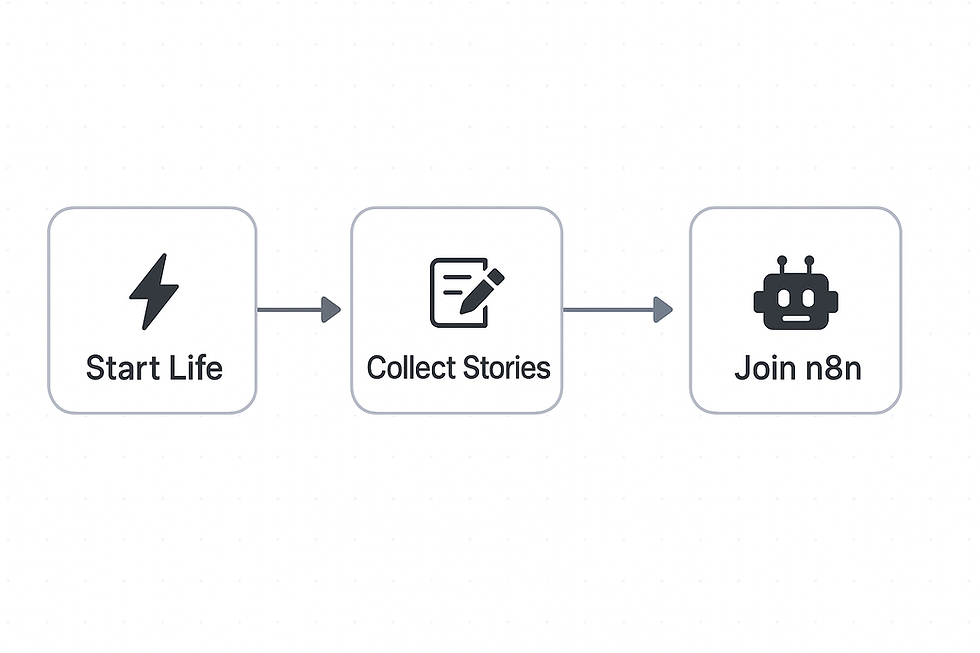How To Cold Outreach And Network To Get Your Dream Job?
- Harshal

- Oct 20, 2022
- 7 min read
Updated: Jun 11
Have you heard “you need to network for a job”, but are not sure how to reach out to someone out of nowhere? Whom do you reach out to? Even if you do a cold email, how does emailing someone result in a job?
We’ll cover how to land a job through networking in this article. My own experience and coaching learnings have been in networking for a Product Manager role, so I’ll share in that context. I will keep things very tactical here and skip over all niceties or tact.
This post is too long for an email so you might want to click on “view in browser”.
Where does this topic fit?
In an earlier webinar, I described the PM job hunt as a process (think of a marketing funnel). I am publishing a few tips to improve each part of the job hunt. We cover step 2 and 3 in this article:

List of target companies
People (a.k.a Champions) list
Outreach to potential champions in target companies
Informational interviews
Resume, cover letter
Job post search
Request referral
Recruiter interviews, behavioral interview Q preparations
Case interview Q preparations
Preparations about the company and on the interviewers
Functional (PM) interview Q preparations

Thumbnail credits to Image by Freepik.
People (a.k.a Champions) List
In the process of getting your first (or next) Product Manager job, you would benefit from searching for the right people. This is one of the things I talk about in my Getting your first PM job talk.
A step prior to this is to look at which companies are important for you. Start searching for potential “champions” in these target companies. “Champions” are people who would be willing to recommend you to their company or give you advice to help you do better in your interviews in their companies.
Tip #1 A Venn Diagram for Champions
Target either champions in the companies in your list or roles of interest. You can search not just on one platform but across LinkedIn, Facebook, family contacts, and your phone book. That will help you reach a broader set of champions.

Don’t literally draw a Venn diagram for this tip!
Tip #2 A Pyramid of Champions
There are four tiers of potential contacts, ranked in decreasing level of closeness but increasing likelihood of finding someone in your desired role or company. These are:

First connections: The first and easiest are the first-degree connections who you already know and can start talking to directly. These are your friends on facebook, your family, phone book contacts, and your LinkedIn connections.
Alumni: These are people from your job or school. For example, for me these involved ex-Cisco people, IIT graduates, and more.
Second-degree connections: These are the contacts who are connected to someone you know. In these cases, you can get a personal introduction, to make the outreach a “warm outreach” instead of a cold outreach, increasing the likelihood of getting a response. This includes your second-degree network on facebook or LinkedIn and your extended family.
Similar niche interest: These are people who are in a similar niche as you. You can reach out to them if they have mentioned this on LinkedIn and maybe explicitly call that out as a reason for you reaching out. For example, I reached out to people who were musicians or were into martial arts and I highlighted these similarities with my background.
Tip #3 Create your Champions Tracking Sheet
Assuming you have already come up with potential champions you want to contact, the next step is to record all the important details. There are many things to remember about each person and you cannot rely solely on your memory. You need a Customer Relationship Management (CRM) tool. In this case, a Champions Tracking Sheet will help you collect important details.
The Champions Tracking Sheet you set up can be similar to the company list because it has multiple columns of information and conditional formatting. I haven’t yet published about the company list step, but once I post it I’ll cross-link it here.
The conditional formatting will remind you to follow up or reach out to contacts once in a while. You may forget which channel you used to chat with them when you last talked. A CRM-tool style networking tracker helps keep in touch, review champions to request help from later, and get interview tips.
Some of the details you need to collect are
Contact person’s name.
The company name
The job title
A note on how you know them
The contact tier
Their email address and their LinkedIn link. Are you connected on LinkedIn?
The action, date that you took the action, and the channel
The next steps and the insights.
Let’s explain some of these.
(5) Contact tier is the level of likelihood you feel this person will be a champion for your career. Do you think they will refer you to their company? Write a personal recommendation for you? Talk to you again? Give you interview practice?
(7) The “action” refers to whether you reached out to them, followed-up the first time, asked for a recommendation, reached out for small talk, or whatever else.
(7) The “channel” refers to the channel you used - SMS, voice call, Whatsapp, LinkedIn, Facebook, in-person, and so on.
(8) The “next steps” could be following-up, asking for a referral, or a reminder to tell them you’ve implemented their advice.
(8) “Insights” includes some unique advice or story you heard from them that you want to repeat back in follow-up conversations to show you remember.
A Template for your Champions Tracking Sheet
You can use this template. Here is a sample spreadsheet to maintain a list of potential champions you’ve talked to, to help you remember to stay in touch and remember when you reached out to them and where.

Some of the tools that can help are:
Excel or Google Sheets. This allows you to customize how your list looks like. You can add as many details as you need on the spreadsheet. They will both allow you to add conditional formatting.
OneNote: Note-taking apps like OneNote. I like OneNote because it allows me four levels of hierarchy for notes. These are notebooks, sections, pages, and headings. You can use any other tool you like. I’ll share in an upcoming post about pointers to prepare for a call or an interview and how your note-taking app sets you up for success.
Ways to reach out
First way is to reach out via LinkedIn, Facebook, Twitter, etc. i.e. social media platforms where you can search for a user without knowing their contact details.
The second way is to reach out via email. Before reaching out, you need to know a person’s email.
Tip #4 How to find someone’s email
I’m using tips from Hunter’s blog. One great tool is Hunter’s Email Finder which will assist you to get emails from people. To get started, you can create a free account here and navigate to the Finder page. Key in a person's name and company URL and click the magnifying glass button. Hunter will bring you some results that you can copy or save.

Another software is ContactOut. This email finder tool offers a chrome extension that allows users to find the email addresses of potential leads directly from LinkedIn. ContactOut reached out to me to suggest using their tool and mention them here. ContactOut is a go-to email finder tool as it provides accurate email addresses with great ease, whether you’re looking for business or personal email addresses.

Another way is to guess someone's email. Look for the info email and find how the company writes its email. You can easily find a solution from the pattern that they use. Ie Lastname.firstname@company.com. But what if you don't know what pattern to use. You can use Experte which tries a few patterns, pings the mail server, and figures out which email address works or doesn't work. I tried it with a few emails and it worked great!

After you have collected the information in your tool, it is time to contact people.
Tip #5 When to follow up after reaching out?
As you continue, start tracking your response rate and follow-up time. For example, you may have a 10% response rate, and you follow up 1 to 2 times after a week. This is an example of email outreach:

Whereas, on LinkedIn, since you cannot follow up easily, I suggest a two-step approach as illustrated here. If you are reaching out on LinkedIn, I’d suggest using the “InMail” option versus doing it directly with the “add request” option. When doing the “add request” way, include a well-written personalized note. People get 15+ add requests weekly, and you need to stand out to get a reply.

Your initial response rates may be low. Even a 10% response rate is good. I found my interactions more successful when I focused on learning from their journey or expertise instead of asking about their role and company.

People respond to different things, and you have to be mindful in the questions you ask during this stage.
Tip #6 What should you write in your cold mail?
Appreciate their career trajectory or success: When contacting people, appreciate their trajectory. Acknowledge their strides in their career.
Understand their busy schedule: When reaching out to your prospects, remember the frequency and how you do it. For example, if you did not hear back from someone, instead of calling them out for not responding, be mindful and ask them if they need anything. This will affect whether people will get back to you and how they do it. Acknowledging that you realize they are busy may also be a good thing in your follow-up. Be kind, respectful, and considerate in your cold email outreach.
Remark on your similarities: Another thing that works when reaching out is mentioning (explicitly or implicitly) your similarities. You can say how you are both in the same industry, department, or function.

Before you contact anyone, always think of three possible outcomes from each call. Always have in mind the outcome you want out of this interaction. These can be
Get referred to their company,
Learn about Product Management
Learn about their company (for when you have an interview).

How to prepare for a warm outreach?
When requesting an introduction to someone via a champion, share a pre-written 3rd person introductory note. This will include
Courtesy greetings,
An introduction - Your champion introducing you to their contact
A reason - why your champion thought it is a good idea for them to introduce you to their contact
Sharing a pre-written note to your champion will reduce the friction for them to introduce you to someone, increasing the likelihood they go ahead with it. I’d suggest asking for 1-2 intros at a time and then going through with the introductions to show your sincerity before asking for more intros from the same champion.
Want to learn more about networking to find a job?
I will post about preparing for an informational call to get the outcomes you want, preparing a company list, and getting ready for the interviews you get through such referrals.
You can watch the whole webinar recording here Getting Your First PM Job - by Harshal Patil.
Originally published at https://harshalpatil.substack.com on Sep 08, 2022









